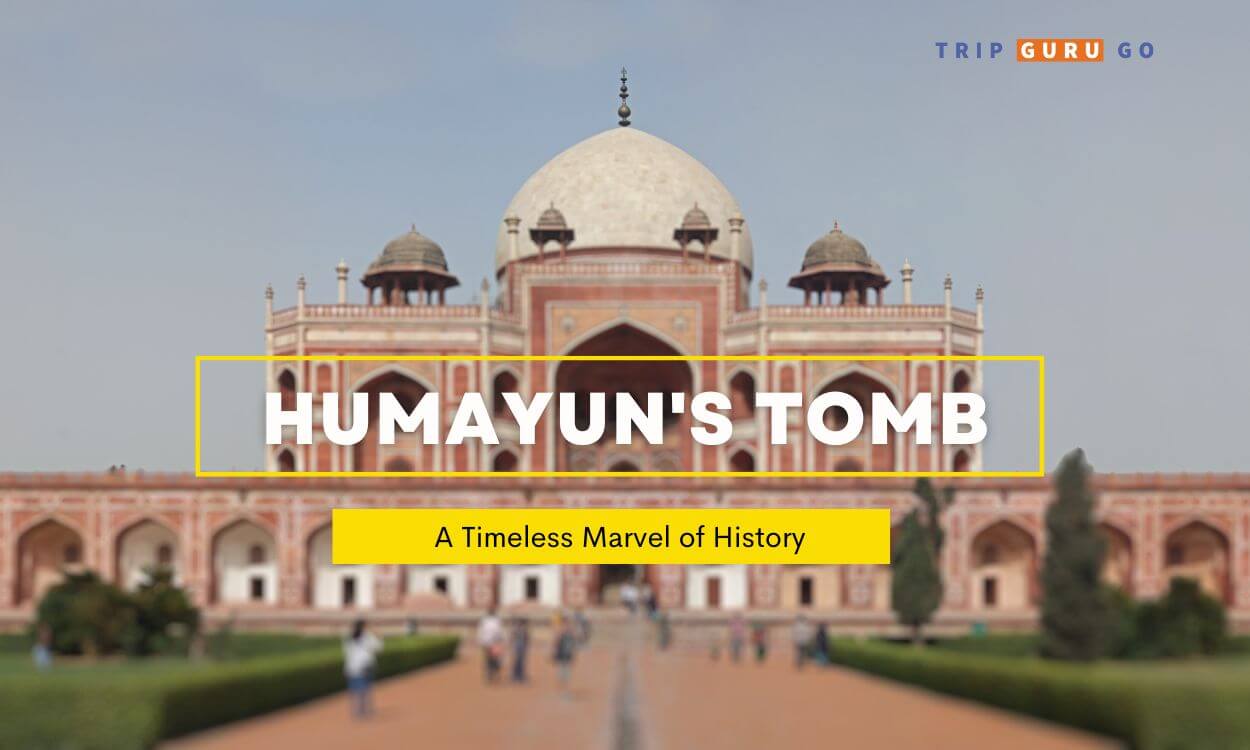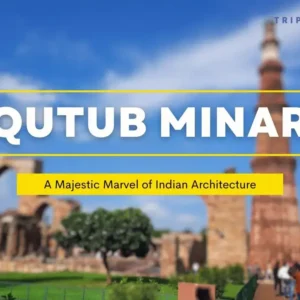Introduction:
Humayun’s Tomb will always be a memory of how grand and beautiful the Mughal building was. This lovely tomb is in Delhi, which is in India. It is a sign of the Mughal era and has a lot of historical value. In this article, we will learn about Humayun’s Tomb and its interesting past. Find out why this beautiful building is so important to the society by visiting it. Humayun’s Tomb is one of the best places to visit in Delhi. This is important knowledge for guests and tourists.
Humayun’s Tomb Historical Significance:
In the middle of the 16th century, Humayun’s wife, Maharani Bega Begum, oversaw the building of Humayun’s Tomb. Mirak Mirza Ghiyas, a famous Persian builder, made something that mixes Persian and Indian building styles. It has been a source of inspiration for many years to come.
Emperor Humayun, the second Mughal ruler, rests in the tomb. He was very important in making the Mughal Empire what it is today. Indian history changed when he was in charge. Because it made it possible for Mughal art, culture, and government to grow. Between 1565 and 1572, builders made the tomb. It is one of the oldest Mughal buildings in India. The building and design of the tomb demonstrate the close cultural ties between India and Persia when the Mughals ruled both.
Humayun’s Tomb is important not only because of what it means to history. But also because it changed the way other Mughal buildings, especially the famous Taj Mahal, were built. This beautiful building was used as a model for many other Mughal tombs that came after it. It was an important part of how Mughal architecture changed over time.
Humayun’s tomb Photos & Images
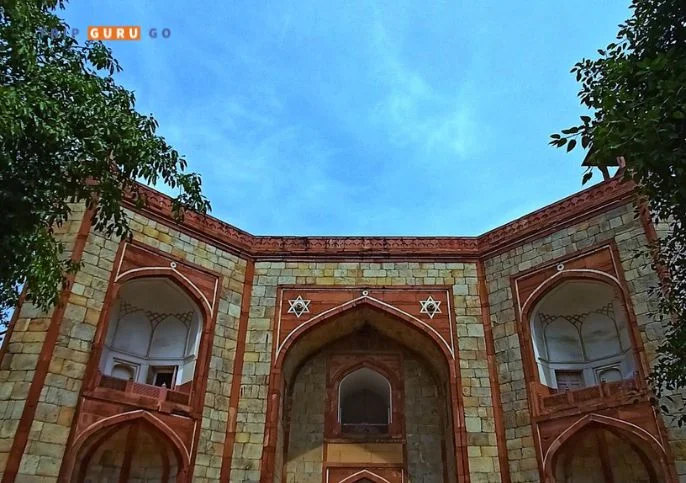
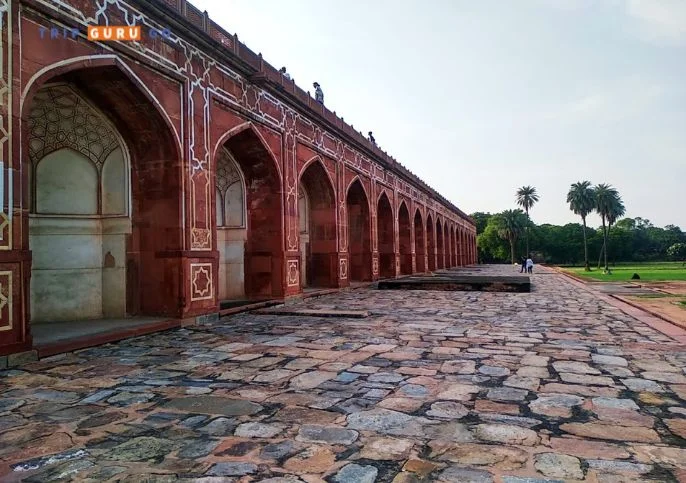
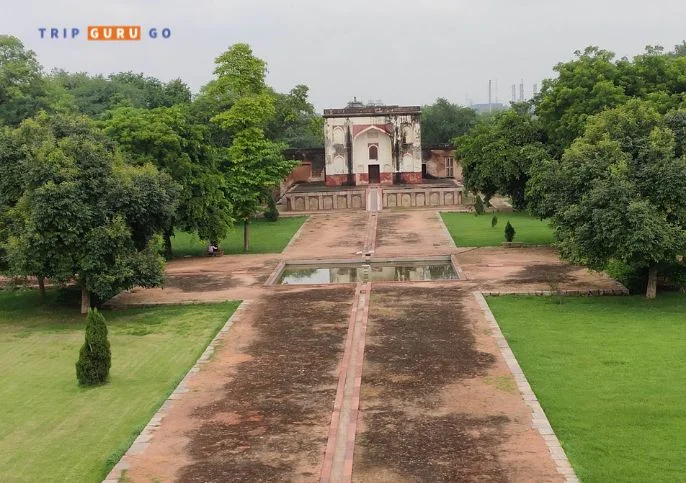
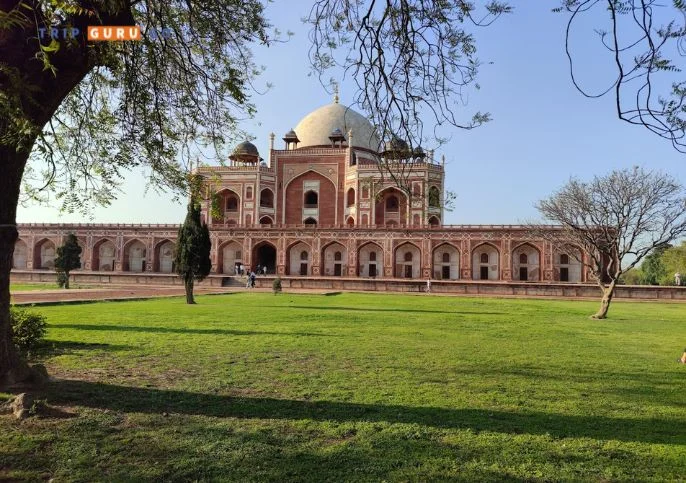
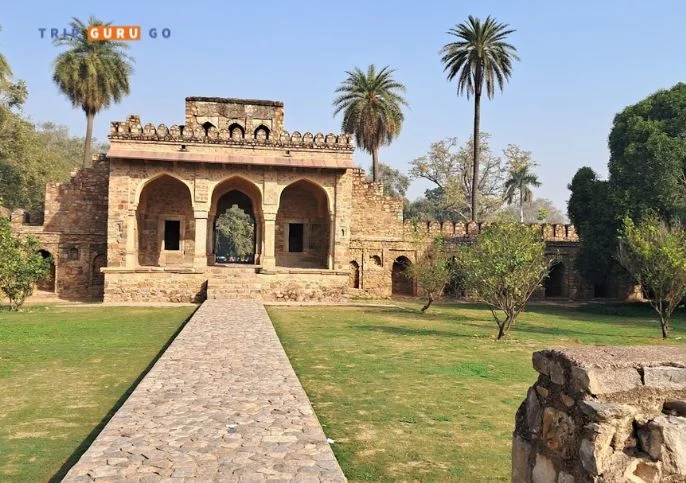
Emperor Humayun and the Construction of the Tomb:
In 1530, Emperor Humayun became the second Mughal king of the Indian region. During his time in power, he had to deal with many problems, such as border disputes and fights within his own country. But Humayun’s love of art, culture, and building construction was unmatched and left a lasting mark on the Mughal Empire.
Tragically, in 1556, Humayun met with a fatal accident, falling down a flight of stairs in his library. His death sent shockwaves through the empire, leaving his beloved widow, Empress Bega Begum, devastated. In her grief, she resolved to construct a mausoleum that would honor her husband’s memory and reflect the greatness of the Mughal Empire.
Maqbara-i-Humayun Influence of Persian and Indian Architectural Styles:
Humayun’s Tomb is a beautiful mix of Persian and Indian types of architecture. Mirak Mirza Ghiyas, who was in charge of building the tomb, was from Persia, which is now known as Iran. With his knowledge of Persian building and Indian workmanship, he made a marvel that brings together the best of both cultures.
The base of the tomb looks like an eight-pointed Persian star and a huge double dome sits on top. Which is one thing that Persian building is known for. The building’s beautiful chhatris (small minarets with domes) and ornate jali (jali) work look like they came from Iran.
Also, the use of red rock shows that Indians had a hand in building it. Which is a popular building element in the area and has roofs and finials. Which is what makes native Indian design stand out.
The Charbagh Garden surrounds the mausoleum. They mixed Persian and Indian gardening ideas. This yard design consists of four square sections, portraying the order and calmness typical in Persian fields. The design draws inspiration from the way Indian gardens create water pathways and waterfalls.
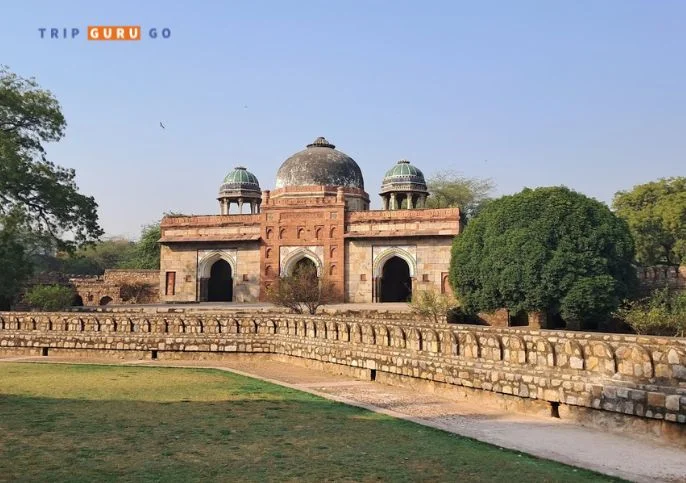
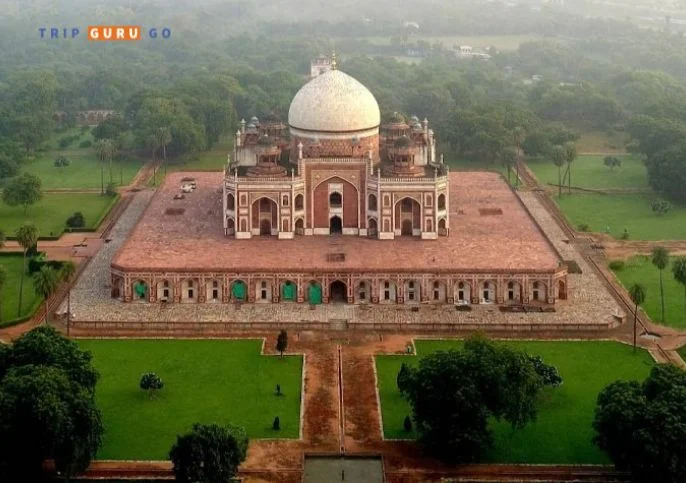
Architecture and Design of Humayun’s Tomb
Humayun’s Tomb is a stunning example of a Mughal building. Its form is a beautiful mix of Persian and Indian styles. This beautiful tomb in the middle of Delhi, India, shows how the Mughal period was a time of rich cultural exchange. Let’s start with a detailed look at its structure, plan, and most important parts. All of these things add to the amazing beauty of this ancient site.
1. Architecture and Layout:
Humayun’s Tomb is built in the traditional Persian char bagh style, which means “four gardens.” The tomb complex is made up of a bunch of squares, which creates an orderly and peaceful space. The main entrance, which faces south, leads to the center garden, which has paths that split it into four sections.
2. Charbagh Garden:
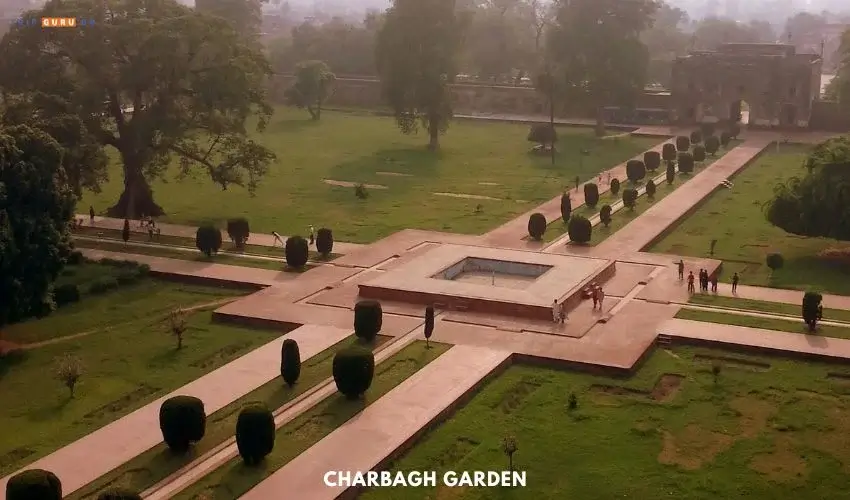
The Charbagh garden is the most important part of the design of the tomb, and it shows how much Persian design influenced the Mughal building. The makers made these four-sided gardens to represent the idea of heaven and to catch people’s eyes, creating a calm place for people to think and remember.
The paths in the garden meet at the main cenotaph of the tomb. From there, they go to the four sides of the area. The builders carefully cut each section into smaller sections. Which showed how much attention he paid to detail and emphasis on balance.
3. The Dome:
The main feature of Humayun’s Tomb is its beautiful double dome, which was inspired by Persian architecture. The dome’s size and height give it a sense of greatness and power, which draws the eye upwards.
The dome’s outside is made of white marble, which looks great next to the red rock used for the rest of the building. This mix of materials adds to the tomb’s beauty and shows how well Persian and Indian types of architecture can work together.
4. Intricate Marble Inlays:
Humayun’s Tomb is a Mughal building with exquisite marble carvings. Craftsmen carefully cut intricate geometric patterns, floral themes, and arabesque designs into the marble surfaces, making a complex fabric of art.
Artisans put semiprecious stones like jasper, carnelian, and lapis lazuli into the marble to make it look better. The way light plays on these valuable stones, especially at sunrise and sunset, gives the structure a magical look.
5. Calligraphy:
Another striking element of the tomb’s design is the extensive use of calligraphy. Elegant Nastaliq writing is used to write verses from the Quran and songs on the fronts of mausoleums, the domes of their entrances, and inside rooms. Writing is not just a way to make things look nice. Rather, it gives the building a spiritual value as well. This shows how holy and serious the Mughal kings were about their faith.
Humayun’s Tomb Other monuments:
1. Tomb and Mosque of Isa Khan:
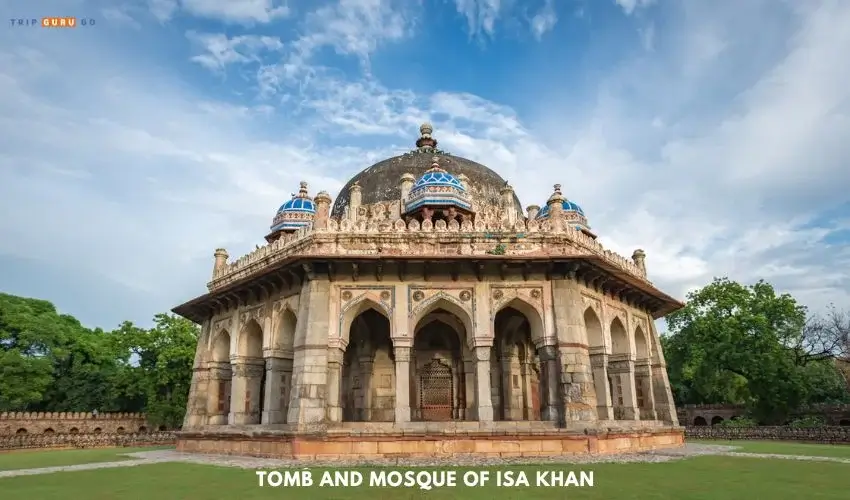
The Tomb and Mosque of Isa Khan are located within the serene surroundings of the Humayun’s Tomb complex in Delhi. This elegant structure is dedicated to Isa Khan Niyazi, a nobleman from the Afghan Sherwani dynasty who lived during the reign of Sher Shah Suri. The tomb, built in the 16th century, showcases a unique blend of Afghan and Indian architectural styles. Its octagonal dome and intricate ornamentation make it an architectural gem, complemented by a beautiful mosque with an exquisitely designed mihrab (prayer niche).
2. Tomb of Barber (Nai Ka Gumbad):
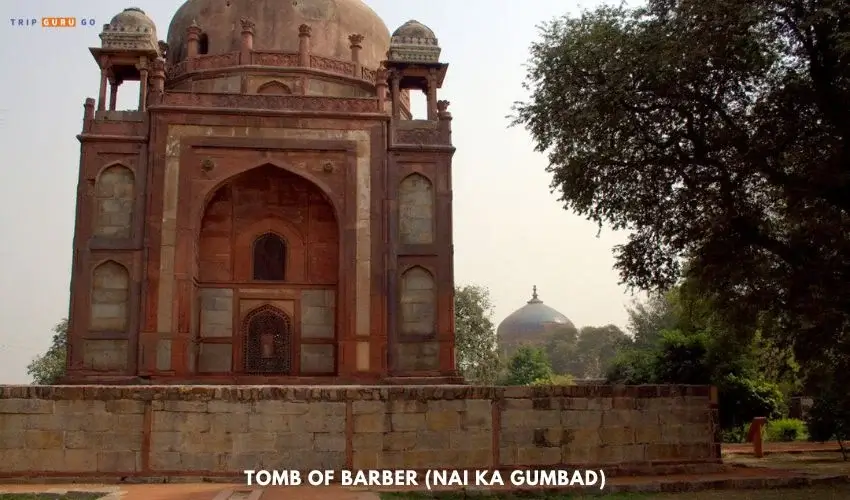
The Tomb of Barber, also known as Nai Ka Gumbad, is a lesser-known but historically significant monument situated near the historic Lodhi Gardens in Delhi. This simple yet charming structure dates back to the Lodi dynasty of the 16th century. The tomb is believed to belong to a royal barber who served the Lodi rulers. History enthusiasts find the tomb interesting due to its octagonal shape and decorative arched openings, which characterize its architectural style.
3. Chilla Nizamuddin:
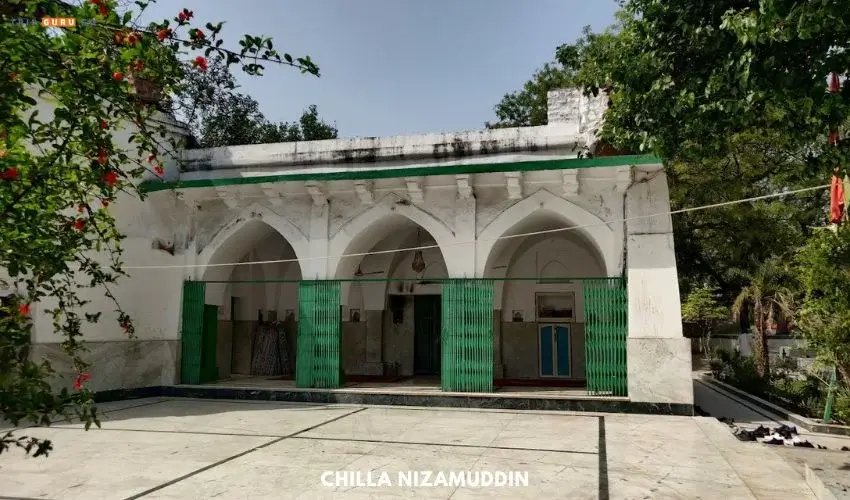
Chilla Nizamuddin is a spiritual retreat and tomb dedicated to Hazrat Nizamuddin Auliya, a revered Sufi saint of the 14th century. Located in the bustling Nizamuddin area of Delhi, this tranquil site serves as a place of pilgrimage for devotees seeking spiritual solace. The Chilla, meaning a place of spiritual seclusion, is where the saint is said to have spent time in meditation and contemplation. The tomb, surrounded by a beautiful garden, is an example of Indo-Islamic architecture with intricate stone carvings and a stunning dome.
4. Afsarwala Tomb and Mosque:
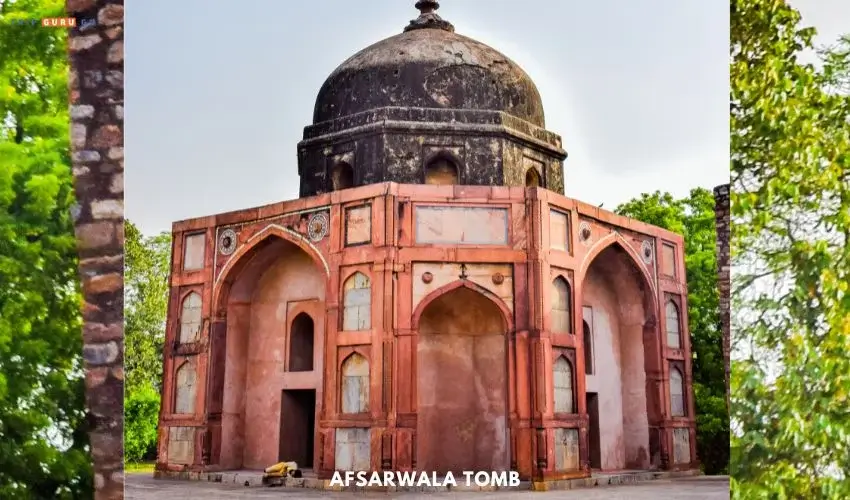
The Afsarwala Tomb and Mosque complex lies in Mehrauli, Delhi, and dates back to the 16th century. This historical site comprises a tomb, a mosque, and a stepwell. Believed to be the resting place of an official (afsar) of the Mughal court, the tomb features an impressive double-domed structure with intricately designed brackets and plasterwork. The accompanying mosque, adorned with decorative calligraphy, adds to the architectural charm of the complex.
5. Bu Halima’s Tomb and Garden:
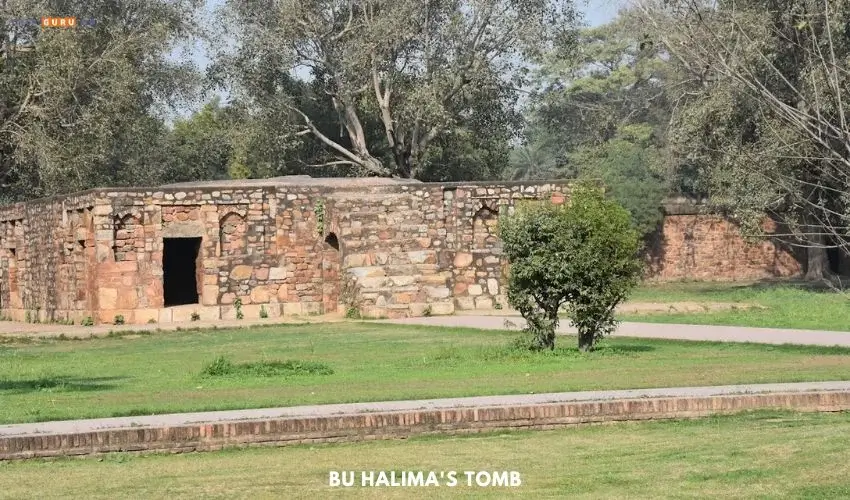
Nestled in the lush greenery of Mehrauli Archaeological Park in Delhi, Bu Halima’s Tomb and Garden is a hidden gem of historical significance. It is believed to be the tomb of Bu Halima, a wet nurse who cared for Emperor Humayun during his childhood. The tomb’s unique octagonal design and faded frescoes add to its mystique. The serene garden surrounding the tomb offers a tranquil setting for visitors to immerse themselves in the history and legacy of this remarkable woman.
6. Arab Serai:
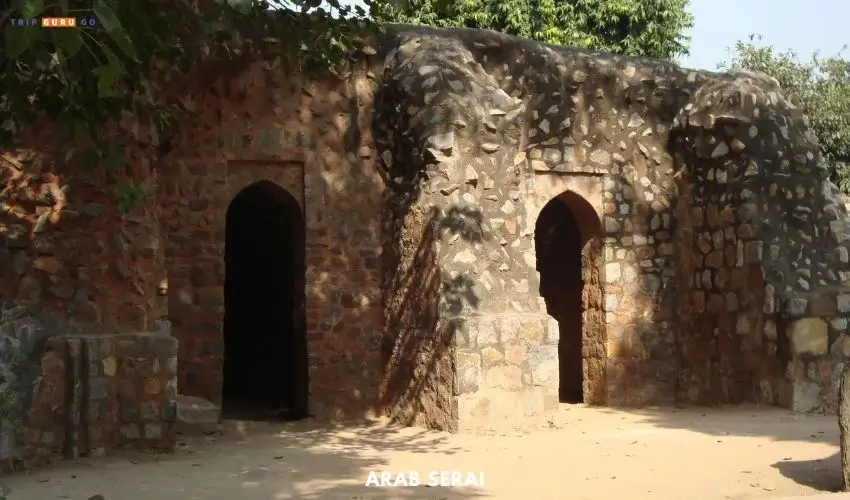
The Arab Serai, located in the Mehrauli area of Delhi, is an ancient caravanserai that dates back to the 16th century. Built during the reign of Emperor Sher Shah Suri, it served as a resting place and inn for traders and travelers from Central Asia and Arabia. This historical site showcases an arched entrance and a courtyard surrounded by chambers where merchants could rest and conduct their business. The Arab Serai provides a glimpse into the vibrant trade and cultural exchanges that once took place in Delhi.
7. Nila Gumbad:
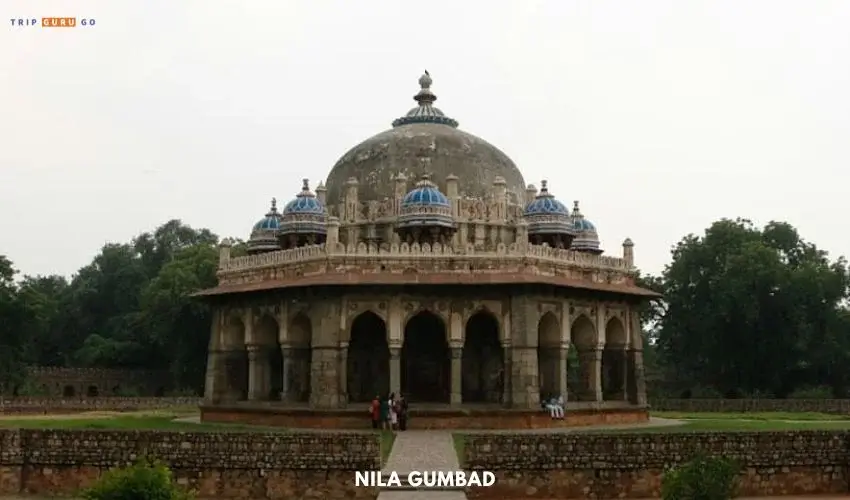
The Nila Gumbad, also known as the Blue Dome, is a beautiful 16th-century tomb located in the Nizamuddin area of Delhi. It is believed to be the tomb of a nobleman or a poet from the Lodi dynasty. The tomb’s striking blue-colored dome, adorned with intricate geometric patterns, is a prominent feature that lends it its name. The monument’s architecture reflects a mix of Afghan and Indian influences, and the surrounding garden adds to its charm and serenity.
These lesser-known but historically significant monuments in Delhi offer a glimpse into the rich and diverse heritage of the city, showcasing the architectural prowess and cultural exchanges that have shaped its history over the centuries.
The Monument of Regal Tombs
The monument housing the tombs of several illustrious figures from Mughal history is a captivating site that echoes tales of grandeur and legacy. Let’s explore the resting places of these esteemed individuals who played pivotal roles in shaping the Mughal dynasty.
1. Nasiruddin Muhammad Humayun:
At the heart of this monumental complex lies the tomb of Emperor Humayun himself. This magnificent structure is a testament to his lasting legacy and his significance as the second ruler of the Mughal Empire.
2. Hamida Banu Begum:
Hamida Banu Begum, also known as Haji Begum, was Emperor Humayun’s cherished wife and the mother of Emperor Akbar. Her tomb stands as a symbol of love and devotion, reflecting her prominent role in the Mughal court.
3. Bega Begum:
Bega Begum, often referred to as Haji Begum, was the principal figure behind the construction of Humayun’s Tomb. Her own resting place is a testament to her dedication to her late husband and her instrumental role in immortalizing his memory.
4. Shahzada Murad Mirza:
Shahzada Murad Mirza, a prince of the Mughal bloodline, found his final abode among the tombs in this monument, contributing to the royal lineage enshrined within its walls.
5. Shahzada Dara Shikoh:
The tomb of Shahzada Dara Shikoh commemorates the tragic fate of this intellectual and enlightened prince, who was vying for the throne but met an untimely end.
6. Shahzada Kam Baksh:
Shahzada Kam Baksh, another prince of the Mughal dynasty, rests in peace alongside his illustrious predecessors, contributing to the ensemble of regal tombs.
7. Shahzada Bidar Bakht:
Shahzada Bidar Bakht, a member of the Mughal family, lies in eternal rest, leaving behind his mark on the dynasty’s history.
8. Muizuddin Muhammad Jahandar Shah:
Emperor Jahandar Shah’s tomb is among those housed within this monumental complex, marking the final resting place of this Mughal ruler.
9. Muinuddin Muhammad Farrukhsiyar:
The tomb of Emperor Farrukhsiyar stands as a poignant reminder of the turbulent times of Mughal history and the legacy of this emperor’s reign.
10. Shahzada Azim-ush-Shaan Mirza:
The tomb of Shahzada Azim-ush-Shaan Mirza adds to the collection of Mughal princes interred in this grand monument.
11. Shahzada Rafi-ush-Shaan Mirza:
Shahzada Rafi-ush-Shaan Mirza, another royal prince, finds his eternal abode among the regal tombs.
12. Shahzada Jahan Shah Mirza:
Shahzada Jahan Shah Mirza’s tomb is one more in the ensemble of the Mughal princely tombs, each representing a distinct thread in the tapestry of Mughal history.
13. Shahzada Humayun Mirza:
Shahzada Humayun Mirza, named after the illustrious emperor, rests within the confines of this storied monument.
14. Rafi ud-Darajat:
Rafi ud-Darajat’s tomb adds to the collective remembrance of Mughal emperors and nobles who found their eternal solace in this sacred ground.
15. Rafi ud-Daulah:
Rafi ud-Daulah, a member of the Mughal dynasty, finds his final repose amidst the grandeur of this historical site.
16. Azizuddin Muhammad Alamgir II:
The tomb of Emperor Alamgir II, the last of the Mughal rulers to be laid to rest here, completes the ensemble of regal tombs, each preserving the essence of a bygone era.
The monument of these illustrious tombs stands as a testament to the rich and captivating history of the Mughal Empire, where each tomb weaves a tapestry of stories and legacies, leaving an indelible mark on India's historical narrative.
Humayun’s Tomb: A Timeless Icon in Popular Culture
Bollywood’s Fascination:
Humayun’s Tomb has captured the imagination of Bollywood filmmakers, becoming a popular filming location over the years. Its breathtaking architecture and picturesque surroundings have provided the backdrop for numerous iconic scenes in Indian cinema. From romantic sequences to intense drama, the grandeur of this Mughal marvel has lent an air of sophistication and historical charm to various Bollywood movies.
Humayun’s Tomb Inspiration for Other Monuments:
Humayun’s Tomb’s architectural brilliance and its fusion of Persian and Indian styles have inspired other monuments in India. One notable example is the iconic Taj Mahal in Agra, built by Emperor Shah Jahan in memory of his beloved wife, Mumtaz Mahal. The Taj Mahal, often considered a masterpiece of architecture, draws inspiration from Humayun’s Tomb, exemplifying the lasting impact of this historic monument on subsequent architectural marvels. The rich history and cultural significance of these landmarks make them must-visit destinations for travelers exploring India. Whether you’re an architecture enthusiast or a history buff, adding a visit to Humayun’s Tomb and the Taj Mahal to your India Travel Guide will ensure an unforgettable experience.
Humayun’s tomb timings:
| Days of the Week | Visiting Hours |
|---|---|
| Monday to Sunday | 6:00 AM to 6:00 PM |
Humayun’s tomb ticket price:
| Visitor Category | Ticket Price (INR) |
|---|---|
| Indian Citizens | 35 |
| Foreign Tourists | 550 |
| Children below 15 years | Free |
Visiting Information:
- Location: Mathura Road, Nizamuddin East, New Delhi, India.
- Timings: The tomb is open from sunrise to sunset, seven days a week.
- Entry Fees: Indian citizens – INR 35, Foreign tourists – INR 550, Free entry for children below 15 years.
- Photography: Photography for personal use is allowed, but professional and commercial shoots require permission.
- Videography: Videography for personal use is permitted, but professional filming requires permission and a fee.
How to Reach Humayun’s Tomb:
- By Metro: The nearest metro station is JLN Stadium on the Violet Line. From there, it’s a short taxi or auto-rickshaw ride to the monument.
- By Bus: Several buses connect various parts of Delhi to Humayun’s Tomb. Buses on the route to Nizamuddin East will drop you close to the monument.
- By Auto-Rickshaw or Taxi: Auto-rickshaws and taxis are readily available in Delhi and can drop you off directly at the tomb.
Facilities at the Site:
- Parking: Ample parking space is available near the entrance for visitors traveling by car.
- Restrooms: Clean and well-maintained restrooms are available for visitors’ convenience.
- Guided Tours: Professional guides offer informative tours of the monument, providing insights into its history and architecture.
Nearby Attractions of Humayun’s Tomb:
Here are some nearby attractions to Humayun’s Tomb:
- India Gate
- Lotus Temple
- Lodhi Garden
- Akshardham
- National Museum, New Delhi
- Sunder Nursery
- Chandni Chowk
- Red Fort
- Khan Market
- Gurudwara Sri Bangla Sahib
- Purana Quila, Delhi
- Safdarjung Tomb, Delhi
- Waste to Wonder Theme Park
- Raj Ghat, Delhi
- ISKCON Temple Delhi
These attractions offer a diverse range of experiences for visitors to explore and enjoy.
Humayun’s Tomb Photography and Videography Guidelines:
Visitors are generally allowed to take photographs and videos for personal use. But you need permission from the government to use professional tools and shoot commercials. Drone photography is strictly prohibited.
Facts and Trivia:
- The construction of Humayun’s Tomb began in 1565 and was completed in 1572.
- The tomb’s layout is believed to have inspired the design of the Taj Mahal in Agra.
- The tomb is a UNESCO World Heritage Site, recognized for its cultural and historical significance.
Conservation and Restoration:
Humayun’s Tomb has undergone extensive restoration efforts to preserve its architectural beauty. Dedicated conservation projects are keeping the elaborate marble inlays and writing in good shape. This makes sure that this famous structure will continue to attract people for many years to come.
Events and Festivals:
Humayun’s Tomb is sometimes the site of cultural events and festivals, such as Sufi music, art shows, and festivals about the area’s history. These events show off India’s rich cultural history and give tourists a new way to see the country. Which shows some of the customs that are important to the landmark.
Conclusion:
In the end, Humayun’s Tomb is a unique building masterpiece and a sign in Indian history of love and respect. Tourists and history enthusiasts are drawn to it because of its greatness, cultural significance, and the excellent maintenance it receives. As we continue to honor and value Humayun’s Tomb’s history. We invite you to start your trip by learning about and appreciating this unique landmark that stands the test of time and captures hearts.
FAQs (Frequently Asked Questions) about Humayun’s Tomb:
Emperor Humayun, the second Mughal ruler, rests in Humayun’s Tomb, which holds profound historical importance and is considered a masterpiece of Mughal architecture.
The nearest metro station is JLN Stadium on the Violet Line. Buses and auto-rickshaws are also available, dropping you close to the monument.
Yes, professional guides offer informative tours of the monument, providing insights into its history and architecture.
You can take photographs and videos for personal use. However, professional and commercial shoots require prior permission.
Indian citizens pay INR 35, while foreign tourists pay INR 550. Children below 15 years enjoy free entry.
Yes, the tomb is open from sunrise to sunset, seven days a week.
Nearby attractions include Hazrat Nizamuddin Dargah, Purana Qila (Old Fort), India Gate, and Lodhi Garden.
The monument occasionally hosts cultural events such as Sufi music concerts, art exhibitions, and heritage festivals.
Yes, the tomb complex is generally accessible to wheelchair users, with ramps provided in some areas.
To maintain its cleanliness and preservation, visitors are not allowed to consume food and drinks inside the tomb complex.
Humayun’s Tomb Contact and Phone Number:
For inquiries and assistance, you can contact the monument’s management or tourist information center at the following address:
- Address: Hazrat Nizamuddin Aulia Dargah, Mathura Rd, Nizamuddin, Nizamuddin East, New Delhi, Delhi 110013
- Phone: 011 2435 5275
- Google Map Location: https://goo.gl/maps/zGSRyRCaJPTfWxx79

